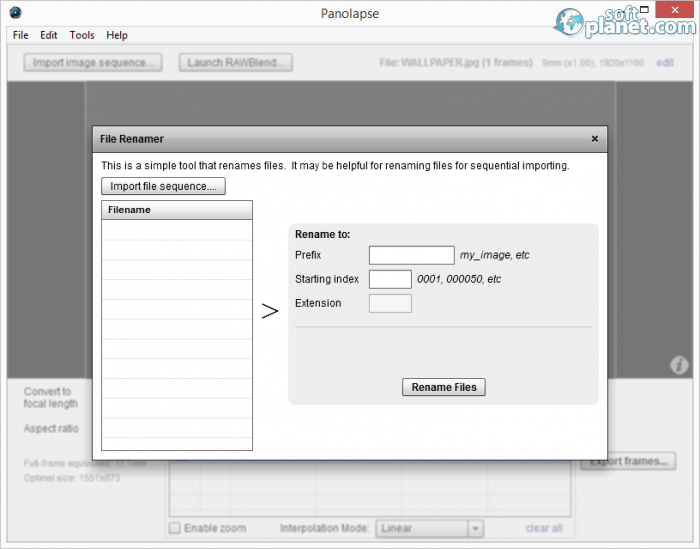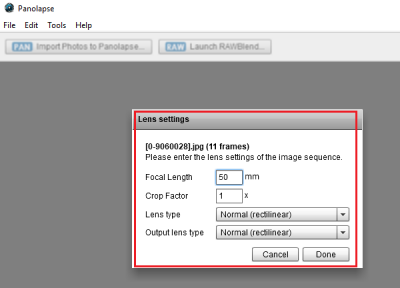

Fir this, the best time-lapse software for the job would probably be LRTimelapse.įor starters, the simplest option would be to create your video, then open that video in a program like Adobe Premiere or Apple Final Cut Pro, and add motion blur. The first thing you’re going to want to do is to reduce flicker. If the time-lapse you have already shot is riddled with the staccato effect, then there are some solutions in post-production. Even small pieces of dust on the lens or sensor are more visible in the higher apertures (around 18 and above), so keep that in mind.

Either way, keep in mind that using very high apertures can also produce artefacts in your images.
#PROGRAM LIKE PANOLAPSE MANUAL#
Again, if you want to use apertures other than the maximum of the lens, this problem can be solved with a manual aperture lens. This is not an issue if you are using the maximum aperture of the lens. This often results in each shot having a slight difference in aperture as the blades are opening and then re-closing for each successive exposure, and they often will not produce the exact same aperture size. Between each shot, the aperture will automatically reopen to its widest to allow more light to hit the sensor or mirror to make metering and focusing more easy on the user and camera. You may also use the aperture but beware.
#PROGRAM LIKE PANOLAPSE ISO#
Low ISO numbers also have generally higher dynamic range – if you can, find out what ISO gives your camera it’s highest dynamic range (the native ISO), and use ND filters with this ISO setting for the best results. Often you will be using low ISO numbers and applying ND filters to further extend the exposure times. This will reduce the sensor sensitivity to light, thereby allowing longer exposures. This can allow you to have more control over the exposure times during bright time-lapse shots.Īnother means by which you can extend the exposure time is to use the lower ISO numbers available on your camera. They will limit the amount of light coming through your lens, stopping the exposure down. Even if you are using a manual aperture lens, ND filters are often an ideal solution to extend the exposure times. This should not be an issue if you are using lenses with a manual aperture ring, however, if your lens does not have a manual aperture ring, consider using ND filters. Depending on the lens, it may introduce flicker into your time-lapse. This can be achieved by using relatively long shutter speeds.Īlthough using smaller apertures is a common way to extend the exposure time for single stills, it is not the best solution for time-lapse. You want a degree of motion blur to work as a segue from one image to the next. The first step to producing smooth time-lapse videos is to make sure that the exposure time will take into consideration the movement between each frame. Don’t jostle the camera and make sure it is securely mounted and this will not be an issue for you. If the camera does get jostled, camera shake will require video stabilization in port production. Place the camera on a solid and secure tripod and avoid moving or jostling the camera while you are capturing your time-lapse. Any decent DSLR should have image stabilisation and decent optics. First, make sure you’re using the best time-lapse camera you can afford. In order to make sure your time-lapse appears smooth, make sure there is no camera shake. The staccato effect is not to be confused with camera shake, which is when the camera moves during your time-lapse. Because there is little to no motion blur, these moving elements in your scene seem to jerk or jump around.

This is when the exposure times for each image in the time-lapse are too short to incorporate enough motion blur to allow the moving elements of the scene to smoothly transition frame to frame. When shooting a time-lapse, sometimes the footage can come off jerky or jumpy – it is often referred to as the staccato effect.


 0 kommentar(er)
0 kommentar(er)
